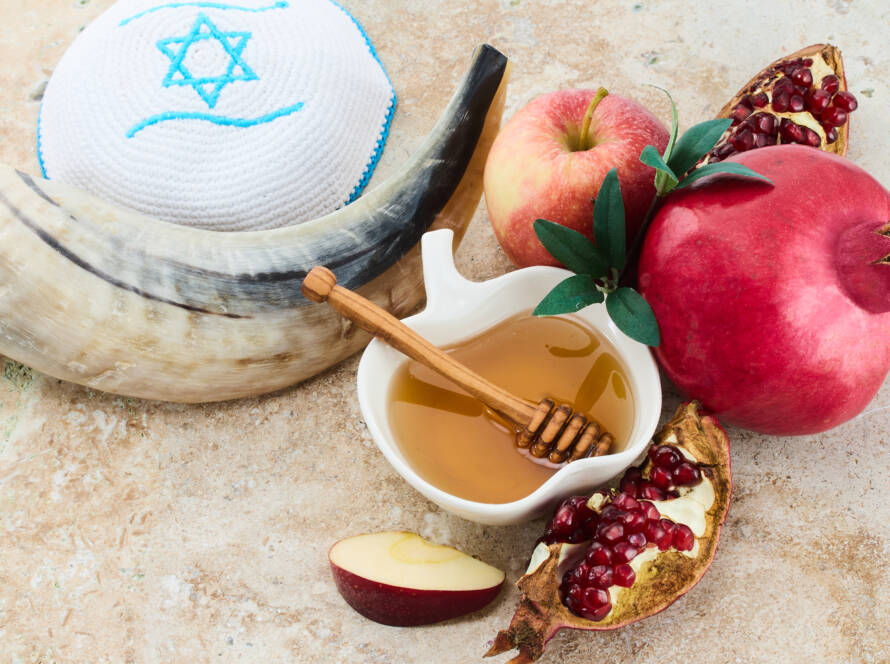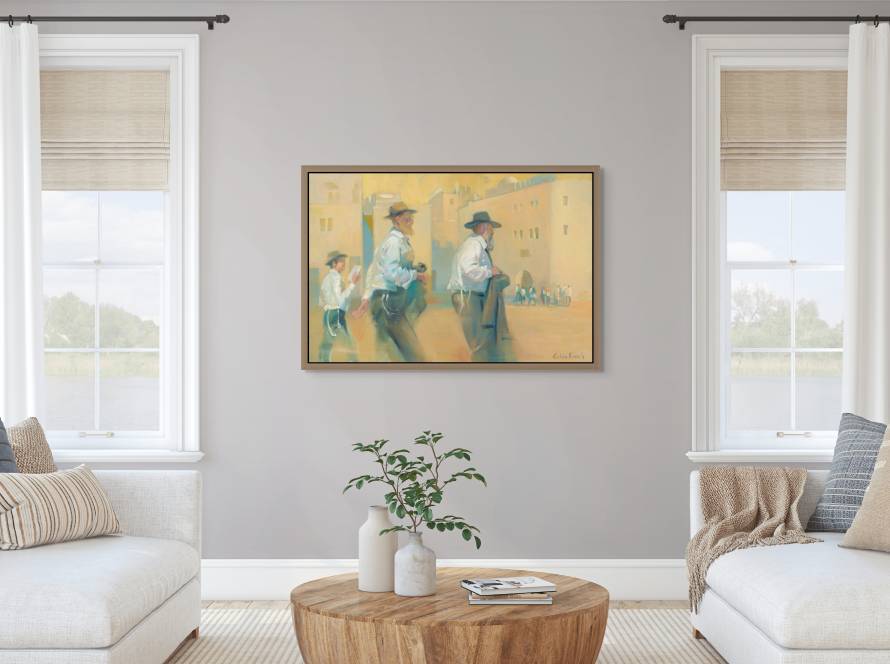The morning light filters through tall windows, casting shadows across paint-stained surfaces. Here, the ordinary becomes extraordinary. Each brushstroke carries tradition and innovation.
Stepping into an artist’s studio is like entering a living, breathing entity. The walls tell stories of struggles and triumphs. Paint tubes wait to release their vibrant colors.
Golda Koosh’s studio in Jerusalem is both a sanctuary and a battlefield. It’s where her spiritual devotion meets modern art. Born in Russia, she brings her Jewish heritage and Moscow School of Arts training to her work.
The air smells of acrylics and possibility. Every corner shows the creative journey. Sketches, palettes, and canvases in various stages of completion fill the space. This studio is alive with the rhythm of creation, where colors blend like spices.
Key Takeaways
- An artist’s studio is a sacred place where visions come to life.
- The workspace reflects the artist’s spiritual journey and cultural identity.
- Golda Koosh blends her Moscow School of Arts training with Jewish heritage.
- The creative process is like culinary art, mixing pigments like ingredients.
- A behind the scenes look reveals the intimate relationship between artist and space.
- Jerusalem provides unique inspiration for contemporary spiritual expression.
Welcome to My Creative Kitchen: Why I Call My Studio Home
Step into my Jerusalem studio, and you’ll see why artists call their spaces creative kitchens. Like a chef mixing ingredients, I combine colors, textures, and emotions. This creates art that celebrates Jewish heritage and spiritual connection. This space has grown with me, from Moscow’s vibrant scene to Jerusalem’s ancient atmosphere.
The Artist Workspace Setup That Sparks Inspiration
My artist workspace setup is the result of years of tweaking. Natural light pours in from eastern windows, lighting up my paints. Each part of my studio has its own role:
- A mixing station where pigments become new colors
- Areas for brushes, palette knives, and texturing tools
- A space for trying out pastes and gels
- Wall displays for works in progress
Creating a Working Environment for Artists That Nurtures Creativity
The best working environment for artists mixes order with freedom. My creative studio design is a mix of order and creativity. Paint-splattered areas tell stories of my past work. Organized drawers help me stay focused during creative bursts.
The spiritual vibe of Jerusalem fills my studio. It turns this physical space into a place where old stories meet new colors and textures.
Behind the Scenes Artist Studio: Where Magic Happens
In an artist’s studio, magic happens through hard work and inspiration. This space is a place of creativity, where old traditions meet new ways of expressing. Here, colors turn into prayers, and canvases tell spiritual stories.
Art Studio Techniques for Mixing Colors and Textures
The palette knife is like an extension of the artist’s soul. Colors blend in a meditative dance. Art studio techniques from past and present come together. Each brushstroke is filled with meaning.
- Warm earth tones evoke the ancient stones of the Western Wall
- Brilliant crimsons celebrate the joy of Jewish weddings
- Deep indigos mirror the parting of the Red Sea
- Golden yellows dance like Klezmer melodies across canvas
Studio Workflow Strategies That Guide My Process
My creative journey follows sacred rhythms. Morning light starts the day. Studio workflow strategies mix order with freedom. The day flows smoothly, from mixing to painting.
How Golda Koosh Works in Her Studio: A Personal Approach
Golda Koosh’s art combines Moscow’s fine arts with Jerusalem’s spirituality. How Golda Koosh works in her studio shows this unique blend. Her paintings reflect her deep faith and artistic skill.
Mastering Acrylic Painting Techniques in My Jerusalem Studio
Working with acrylics in Jerusalem’s art studio is both challenging and rewarding. This fast-drying medium requires skill and quick thinking. Artists must adapt to rapid color changes while keeping their vision clear.
Working with Fast-Drying Acrylics: Challenges and Solutions
Acrylics dry darker than they look wet, so artists must predict color changes. Blending quickly is key, but warm climates make it harder. To solve these issues, artists can:
- Use spray bottles to keep palettes moist
- Work in smaller sections
- Apply paint in thin, quick layers
- Keep brushes in water between strokes
Professional Paint Selection: Amsterdam, Schminke, and Winsor & Newton
Choosing the right professional artist materials is key to achieving desired effects. Each brand has its own strengths:
| Brand | Key Strengths | Best Uses |
|---|---|---|
| Amsterdam | Excellent coverage, affordable | Base layers, large areas |
| Schminke | Intense pigmentation, smooth flow | Fine details, glazing |
| Winsor & Newton | Superior lightfastness, consistency | Professional finishing work |
Retarders, Gels, and Wet Techniques for Depth Creation
To create depth, artists need to master specialized acrylic painting techniques. Retarders slow drying, allowing for longer blending. Heavy gels add texture while staying transparent. Glazing medium makes layers glow, adding light and depth. These tools turn flat surfaces into three-dimensional works, perfect for sacred art.
Building Layers: The Foundation of My Creative Process
Creating textured art starts with understanding each layer’s role. In my Jerusalem studio, I build paintings from scratch. I use dimensional surfaces that connect to ancient traditions.
This method turns flat canvases into stories. They remind us of the Old City’s weathered walls.
Textured Underlayers with Pastes, Sand, and Fabric
The base of textured art is about the right materials. I mix different elements for unique effects:
- Heavy gel medium with Jerusalem sand for stone-like surfaces
- Modeling paste with palette knives for raised patterns
- Fabric in wet medium for organic textures
- Paper under transparent layers for depth
These materials make surfaces that light up in different ways. This brings paintings to life as shadows change.
Decorative First Layers That Set the Stage
After the base dries, I add decorative layers. I use thin color washes that fill crevices and highlight raised areas. These layers set the painting’s mood.
Warm earth tones for biblical stories or cool blues for synagogue scenes.
Impasto and Glazing Methods of Working
The last steps mix impasto with glazes:
| Technique | Application | Visual Effect |
|---|---|---|
| Thick Impasto | Palette knife strokes | Sculptural highlights on robes and details |
| Medium Glazing | Soft brush layers | Luminous skin tones and depth |
| Thin Veiling | Diluted paint washes | Subtle color shifts in backgrounds |
These techniques let me create paintings that show more with each look. They become richer over time.
The Dance Between Planning and Spontaneity
In any artist’s studio, you see a mix of structure and freedom. Sketches and color studies start things off, but the paint often surprises us. This makes planned works turn into something fresh and full of life.
Golda’s work shows this balance well. Her art has been seen in Moscow, London, New York, and Paris. Moving to Jerusalem brought a new level of meaning to her art. The city’s spirit added depth to her work.
Doing commission work is tricky. Clients want specific things, but the best art comes from mixing plans with surprises. Every brushstroke is full of purpose and possibility.
| Planning Elements | Spontaneous Discoveries | Final Outcome |
|---|---|---|
| Initial color studies | Unexpected color blends | Richer palette depth |
| Compositional sketches | Texture experiments | Dynamic visual flow |
| Client specifications | Happy accidents | Personalized masterpiece |
Golda’s art is all about finding the right balance. Each piece shows the beauty of trusting the process while keeping the original idea in mind. This way, her art is loved for years to come, blending careful planning with the freedom of creativity.
Conclusion
The artist studio is more than just a place to work. It’s a sanctuary where old stories come to life through art. In Jerusalem, skill meets spiritual purpose, making paintings that touch both heart and soul. Every brushstroke carries on a tradition, bringing it to today’s art.
This journey is a constant dialogue between the artist and their medium. Each piece of art comes from a mix of careful planning and sudden inspiration. The studio is where acrylic paints turn blank canvases into windows to sacred stories, celebrating Jewish heritage with color and texture.
Looking ahead, we’ll see more techniques, tools, and surprises that shape each painting. The Jerusalem studio’s doors stay open, sharing more stories of faith and creativity. Each painting is a testament to art’s power to connect old wisdom with new expression.




